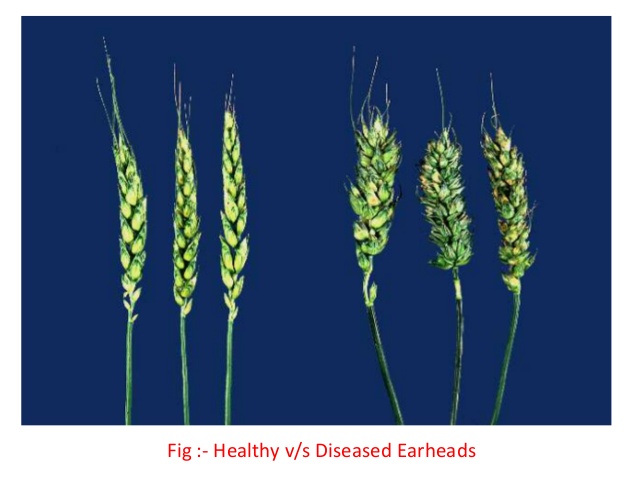
Ear Cockle of Wheat
History and Importance:
•1743
•Anguina tritici
•Yield losses 70%
•Range 30-50%
•10,000 juveniles/kg soil (Threshold)
•In Pakistan 2% loss in yield has been reported from D.G. Khan, Muzaffargarh. Jhang, Faisalabad annually.
Symptoms:
•Dying Plants
•Wrinkled & Twisted Leaves
•Reduced & irregular heads (ears)
•Cockles
Awns twisted
Epidemiology and Disease Cycle:
•Cool & moist
•Second stage juvile lie quiescent in galled grains, which remain in the field at harvest or planted with the seed.
They are liberated when released by moisture during favourale growing period and go in search of healthy plants growing nearby. They start crawling upwards on the roots of the young wheat plants and enter the young plumule from the top. As the plant grows, the juvenile make their way to growing points, which will carry them upto, the seed head. During this waiting period, they feed ectoparasitically on the tissues of leaves and their bases. When the embryo of the seed forms, several nematodes of both sexes enter each seed, began feeding, soon become adults to males and females. Then mating takes place. Each female produces hundreds of eggs from which 1st stage juvenile soon hatch and each moult to 2nd stage, where they remain in this stage until they are released.
•By the time the grain matures, the 1st stage juvenile had consumed the milky contents of the grain. Attacked grains become small, brown to black hard structures called galls. A gall is formed during the reaction of the seed tissue to the products of Slivery glands of nematodes. The number of juvenile in each gall very from 800-32400 and if these galls are stored under cool and dry conditions, the juvenile can remain alive and effective up to 30-40 yeas. The weight of each gall varies from 2.5 to 9.2 milligrams.
Management:
•Crop rotation with non-host crops for 1-2 years will eliminate nematodes, present in the field.
•Clean seed should be sown. This may be obtained from a healthy crop or may be clean by one of the methods given below.
–Sieve Method (Mechanical) Sieves of different mesh sizes are used and galls are separated from the seed.
–Table Salt Solution: If sieving is not possible, prepare 20% solution of common table salt (NaCl) by dissolving 40 lbs of salt in 25 gallons of water. Put the grains in this solution and discard the floating galls and plant debris. Grains should be stirred well so that no gall remains in the grains. Same salt solution can be used again. The grains are rinsed thoroughly and then spread them in thin layers on floor or canvas.
–Hot water Treatment: Presoaking for 2 hours and then putting grains in hot water at 122oF (50ºC) for at least 2 hours. After this grains must immediately be dried by putting them in thin layers. If necessary arrangements are not available for controlling temperature, solar energy can be used to kill nematodes. This method is also effective against the loose smut of wheat (Ustilago tritici)
•Resistant Varieties: Wheat of Mexican blood is fairly resistant to the disease.


